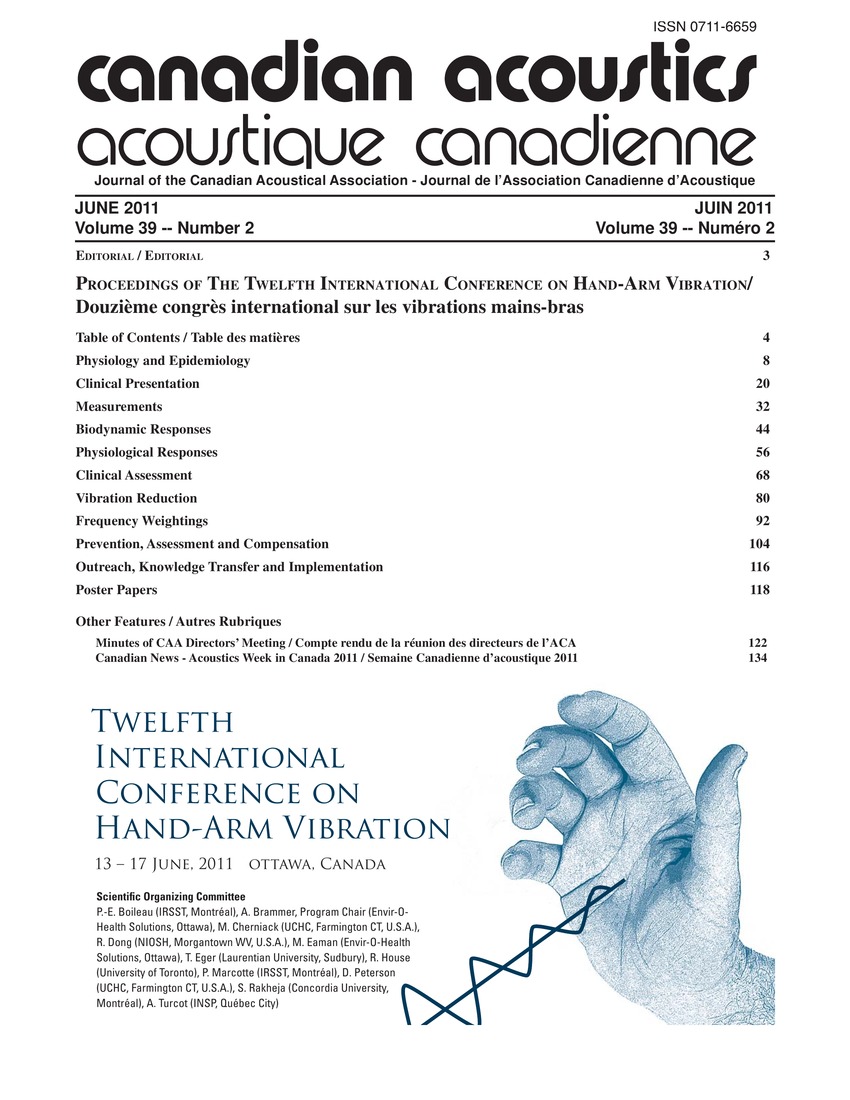Vibration-white foot in a worker with direct vibration exposure to the feet
Mots-clés :
Machine vibrations, Occupational diseases, Ambient conditions, Cold exposure, Cold stress, Hand-arm vibration syndrome, Room temperature, Vibration exposure, Wave formsRésumé
A case is presented of a 54-year-old retired miner with a 2-3 year history of cold intolerance in his feet and cold-induced blanching in his toes. The worker had no significant symptoms suggestive of hand-arm vibration syndrome (HAVS) such as finger blanching, cold intolerance in the hands, or numbness and tingling in the fingers. Normal plethysmographic toe waveforms were seen at room temperature, with significant dampening of the waveforms post cold stress. He was advised to avoid cold exposure as much as possible, to dress warmly whenever exposed to cold ambient conditions, and to minimize future vibration exposure to the feet. This case demonstrated vasospastic disease in the feet of a worker with a history of foot-transmitted vibration exposure. The results show that non-exposed extremities have less severe symptoms best attributed to central mechanisms and circulating systemic vasospastic mediators.Fichiers supplémentaires
Publié-e
Comment citer
Numéro
Rubrique
Licence
Author Licensing Addendum
This Licensing Addendum ("Addendum") is entered into between the undersigned Author(s) and Canadian Acoustics journal published by the Canadian Acoustical Association (hereinafter referred to as the "Publisher"). The Author(s) and the Publisher agree as follows:
-
Retained Rights: The Author(s) retain(s) the following rights:
- The right to reproduce, distribute, and publicly display the Work on the Author's personal website or the website of the Author's institution.
- The right to use the Work in the Author's teaching activities and presentations.
- The right to include the Work in a compilation for the Author's personal use, not for sale.
-
Grant of License: The Author(s) grant(s) to the Publisher a worldwide exclusive license to publish, reproduce, distribute, and display the Work in Canadian Acoustics and any other formats and media deemed appropriate by the Publisher.
-
Attribution: The Publisher agrees to include proper attribution to the Author(s) in all publications and reproductions of the Work.
-
No Conflict: This Addendum is intended to be in harmony with, and not in conflict with, the terms and conditions of the original agreement entered into between the Author(s) and the Publisher.
-
Copyright Clause: Copyright on articles is held by the Author(s). The corresponding Author has the right to grant on behalf of all Authors and does grant on behalf of all Authors, a worldwide exclusive license to the Publisher and its licensees in perpetuity, in all forms, formats, and media (whether known now or created in the future), including but not limited to the rights to publish, reproduce, distribute, display, store, translate, create adaptations, reprints, include within collections, and create summaries, extracts, and/or abstracts of the Contribution.


